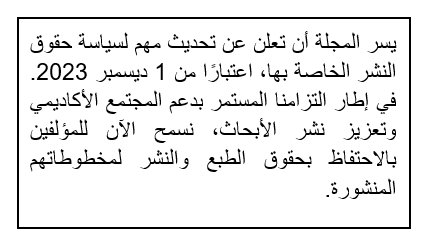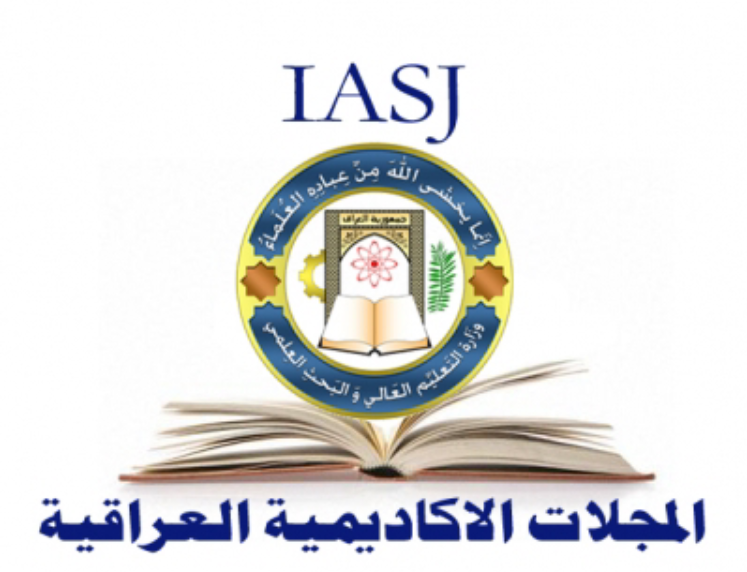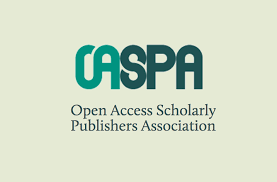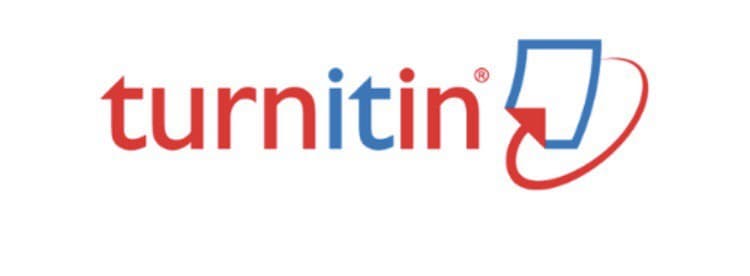التحولات السياسية في جمهورية تركمانستان خلال الفترة (1991-2021)
DOI:
https://doi.org/10.30907/jcopolicy.vi63.566الكلمات المفتاحية:
السلط، ية الفردية النظام الشم، لي، تقديس الفرد، القيادة الكاريزماتيةالملخص
بعد تفكك الاتحاد السوفييتي، شهد عدد من دول الكتلة الشرقية والجمهوريات السوفييتية تحولات سياسية تجاه الانفتاح السياسي. ويعد النظام في جمهورية تركمانستان - وهي إحدى الجمهوريات السوفييتية السابقة - من الأنظمة القليلة التي حافظت على الطبيعة السلطوية للنظام السوفييتي السابق. يسعى هذا البحث إلى الإجابة عن عدد من التساؤلات البحثية وأبرزها: ما هي مظاهر السلطوية في النظام التركمانستاني؟ وما هي العوامل المؤثرة في تشكيل وبقاء النظام السلطوي في تركمانستان؟ وقد توصل البحث إلى مجموعة من النتائج كان من أهمها:
1- أن جذور ظاهرة الاستبداد في تركمانستان ترجع إلى عدة عوامل بنيوية داخلية وخارجية أهمها: السياسات السوفييتية السابقة في التهميش والمفاضلة المناطقية، والصراع المناطقي والقبلي، ودور النخب والقيادة السياسية، فضلاً عن صراع القوى الدولية.
2- تعتبر قبيلة عشق آباد أكثر القبائل التركمانية طموحا في السلطة، وكان ذلك سببا لقمعها خلال الحقبة السوفييتية، مما يفسر هيمنتها المطلقة على الحياة السياسية في مرحلة ما بعد الاستقلال والتي جاءت كرد فعل على سنوات التهميش السياسي.
3- تلعب القيادات السياسية دوراً مهما في تأصيل الأنظمة السلطوية، وكان ذلك واضحا من خلال زعامة الرئيسين صابر مراد نيازوف وقوربان محمدوف.
تاريخ الاستلام: 3/10/2021
تاريخ قبول النشر: 10/3/2022
المراجع
قائمة المصادر:
بوكابوية، سارة. 2018. " تركمانستان قوانين صارمة: لون سيارة محدد ومنع قيادة المرأة." الخليج اونلاين. 11يناير.
بينيغسن، الكسندر.، شانتال كيلكجاي. 1989. المسلمون المنسيون في الإتحاد السوفيتي. ترجمة عبدالقادر ضللي. بيروت: دار الفكر المعاصر.
حسين، خليل. 2009. الجغرافيا السياسية: دراسة الأقاليم البرية و البحرية و الدول و أثر النظام العالمي في متغيراتها. ط1، بيروت: دار المنهل اللبناني.
رضوان، زهير. 2005 . "الدكتاتور و الكتابة. جريدة المدى.5 اذار,2021.
https://almadapaper.net/sub/03-332/10.pdf
ارتي. 2021. "رئيس تركمانستان يعين نجله نائبا لرئيس الوزراء."11فبراير,2021.
سرحان، محمد علي.2007. أمركة العولمة في الشرق الأوسط وآسيا الوسطى: مثلث الخيرات. دمشق: صفحات للدراسات والنشر.
السيد، محمد علي رجب. 2015. تاريخ دول آسيا الوسطى. الإسكندرية: دار الكتب المصرية.
عبدالكريموف، بخيتار. 2017 ."الرئيس التركمانستاني يحصد 97.69% من أصوات الإنتخابات الرئاسية." وكالة الأناضول. 13 فبراير,2017.
عربي 21. 2013. "اول انتخابات تشريعية تعددية في تركمانستان." 12ديسمبر,2013.
عربي 21. 2015. "تمثال ذهبي لرئيس تركمانستان الحالي في عشق أباد." 26مايو,2015.
القليوبي، رامي. 2019. "انغلاق تركمانستان أشبه بكوريا الشمالية في آسيا الوسطى". العربي الجديد. 14يناير.
محمدوف، قوربان.2020 " السياسة الخارجية و الدبلوماسية لتركمانستان." موقع وزارة خارجية جمهورية تركمانستان. مايو8، 2020.
List of references:
Al-Jazeera English News. 2007. "Niyazov Death Sparks Power Struggle." Dec 23, 2006. https://www.aljazeera.com/news/2006/12/23/niyazov-death-sparks-power-struggle
BBC. 2004. " Avoid gold teeth, says Turkmen leader." April 7, 2004. http://news.bbc.co.uk/2/hi/asia-pacific/3607467.stm
Bohr, Annette. 2016. Turkmenistan: Power, Politics and Petro Authoritarianism. UK: Chatham House.
Cerutti, Furio. 2017. Conceptualizing Politics: An Introduction to Political Philosophy. NY: Routledge.
Clement, Victoria. 2019. "Passing the Baton in Turkmenistan." New Atlantic Council. October 21, 2019.https://www.atlanticcouncil.org/blogs/new-atlanticist/passing-the-baton-in-turkmenistan/
Edgar, Adrienne Lynn. 2004. Tribal Nation: The Making of Soviet Turkmenistan. NJ: Princeton University Press.
Eurasianet. 2020."Turkmenistan Tinkers with constitution in apparent transition strategy." Sep 25, 2020. https://eurasianet.org/turkmenistan-tinkers-with-constitution-in-apparent-transition-strategy.
Habeeb, William Mark. 2005. The Growth and Influence of Islam in the Nations of Asia and Central Asia: Turkmenistan. NJ: Mason Crest Publishers.
Heller, Klaus and Plamper Jan. 2004. “ Personality Cults in Stalinism.” Slavic Review. 23-33. http://research.gold.ac.uk/
Heyman, Neil M. 1993. Russian History. NY: McGraw-Hill, Inc
Hiro, Dilip. 2011. Inside Central Asia: A Political and Cultural History of Uzbekistan, Turkmenistan, Kazakhstan, Kyrgyzstan, Tajikistan, Turkey, And Iran. NY: Overlook Duckworth.
Isaacs, Rico. 2015. “Charismatic Routinization and Problems of Post-Charisma Succession in Kazakhstan, Turkmenistan and Uzbekistan.” Studies of Transition States and Societies 7, no.1: 58-76.
Landman, Todd. 2003. Studying Human Rights. NY: Routledge.
Linz, Juan J. 2000. Totalitarian and Authoritarian Regimes. Boulder, Colorado: Lynne Rinner Publishers.
Nazarovich, Rykov Vasily. 2017. “The Communist Party of Turkmenistan.” Rusembindia.com. September 2, 2017.
Nedvetsky, Andrei G. 1994. "Turkmenistan.” In Central Asia and the Caucasus after the Soviet Union: Domestic and International Dynamics, ed. Mohiaddin Mesbahi, 191-206. Florida: UPF.
Nohlen, Dieter, Florian Grotz & Christof Hartmann. 2001. Elections in Asia: A data Handbook. Retrieved from ISBN 0-19-924958-X https://oxford.universitypressscholarship.com
Ochs, Michael. 1997."Turkmenistan: The quest for stability." In Conflict, Cleavage, and Change in Central Asia and the Caucasus, ed. Karen Dawisha and Bruce Parrot, 312-359. UK: Cambridge University Press.
Osbom, Andrew. 2006 . "Saparmurat Niyazov". The Independent. 22 December.
https://www.independent.co.uk/news/obituaries/saparmurat-niyazov-429556.html
Popan, Adrian Teodor. 2015.” The ABC of Sycophancy: Structural Conditions for the Emergence of Dictators’ Cults of Personality .” PhD diss, University of Texas. https://repositories.lib.utexas.edu/handle/2152/46763
Putz, Catherine. 2020. "Death and Denial In Turkmenistan." The Diplomat. 19August.
https://thediplomat.com/2020/08/death-and-denial-in-turkmenistan
Radio Free Europe. 2021. "Turkmenistan's Authoritarian Leader wins senate seat with 100% of Vote.”
Radio Free Europe. 2021 . "Turkmenistan Faces Shocking Population Decline As Exodus Continues." https://www.rferl.org/a/turkmenistan-population-decline-exodus/31355045.html
Rashid, Ahmed. 1995. The Resurgence of Central Asia: Islam Or Nationalism? NJ: Zed Books.
Reuters. 2013. "FACTBOX-Parties and candidates in Turkmenistan's parliamentary Election." https://www.reuters.com/article/turkmenistan-election-parties
Slavomir, Horak. 2016. “Turkmenistan at the last stage of Perestroika, Determinants of an Authoritarian Path.” Annee de mobilisations politigues en Asie centrale :29-49. https://journals.openedition.org/asiecentrale/3227
Sondrol, P. C. 2009. "Totalitarian and Authoritarian Dictators: A Comparison of Fidel Castro and Alfredo Stroessner". Journal of Latin American Studies. 23(3):599.doi 10.1017/S0022216X00015868. S2CID 144333167 https://www.semanticscholar.org/paper/Totalitarian-and-Authoritarian-Dictators
Stronski, Paul. 2017. "Turkmenistan at 25: The High Price of Authoritarianism." Carnegie Endowment. 20 January. https://carnegieendowment.org/
The China Post. 2007. "A new Beginning for Turkmenistan.” https://en.wikipedia.org/wiki/Republican_Party_of_Turkmenistan
The World Factbook. 2021. "Turkmenistan: People and Society." https://www.cia.gov/the-world-factbook/countries/turkmenistan/#people-and-societyWorld Press Freedom Index. 2017. www.rsf.org
Theroux, Paul. 2007. “The Golden Man: Saparmurat Niyazov's Reign of Insanity.” New Yorker. 28 May.
https://www.newyorker.com/magazine/2007/05/28/the-golden-man
Tushnet, Mark. 2015.” Authoritarian Constitutionalism.” Cornell Law Review, Vol. 100, Issue 2 . Cambridge University Press. 100 (2): 36–50. doi:10.1017/CBO9781107252523.004.
Weber, M. 1978. Economy and Society: An Outline of Interpretive Sociology. Berkeley: University of California Press.
التنزيلات
منشور
إصدار
القسم
الرخصة
الحقوق الفكرية (c) 2022 مجلة العلوم السياسية

هذا العمل مرخص بموجب Creative Commons Attribution 4.0 International License.






 ©️ 2023 The Author(s). Published by College of Political Science, University of Baghdad. This is an Open Access article distributed under the terms of the
©️ 2023 The Author(s). Published by College of Political Science, University of Baghdad. This is an Open Access article distributed under the terms of the 












